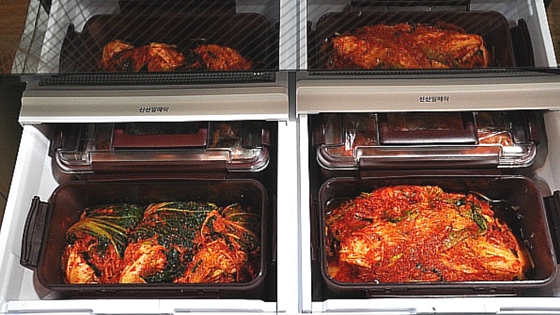5 Korean snacks you should try now
Who does not like to munch on some snacks while waiting for meals in between? Good news for snack lovers: Koreans have a wide range of delicious and tasty snacks that will please your taste buds and fill your appetite. Regardless of whether you are fond of gansik (간식), the food Koreans refer those as those eaten between meals, or gwaja (과자), those packaged snacks that are mass-produced and are commonly found in supermarkets, you will not really have a hard time finding your Korean snack of choice. Here is a compilation of 5 Korean snacks that we are sure you’ll get addicted to:
1. Saewookkang

Saewookkang (새우깡) or shrimp chips are often regarded as one of Korea’s national snacks. Ask any Korean and we’re so sure they will immediately tell you what this snack is. These chips are given to babies because they are very easy to digest, but the elders also crave for this snack from time to time given that they grew up eating this snack during past times. Saewookkang is so popular that it is not uncommon for many Korean restaurants to serve this as a complimentary snack.
2. Chocopie

Chocolate lovers, rejoice! Chocopie (쵸코파이) is a chocolate-covered marshmallow cookie that is very famous not only among kids but also among those serving in the military. It is often told that those who are serving in the military experience grueling training days that they consider eating Chocopie during their breaks as their piece of heaven. This snack is so good that a pyramid of Chocopie would actually be considered as a great substitute to a typical birthday cake.
3. Matdongsan

Matdongsan (맛동산) is another classic Korean snack that has been in the market since the 70s. Matdongsan is basically made out of flour, fried in oil, glazed, and then covered in bits of peanut. The sweetness and crunchiness of this snack make it a huge hit among young children and elders alike.
4. Senbei

Senbei (煎餅?, or sembei) are Japanese rice crackers that are also very popular in Korea. These crackers are either grilled or baked, covered in mirin or soy sauce, and are available in different flavors. This snack is usually served on the side during meals just like shrimp chips and is also offered to house guests at times. Senbei also goes well with tea or any other refreshing beverage of your choice.
5. Tteok (Rice cakes)

Tteok (떡) are glutinous rice flour cakes that are as visually appealing as they are appetizing. These cakes come in different flavors like red and mung bean and are eaten primarily during the Lunar New Year to signify that one is getting older as the new year arrives. But you can of course eat tteok’s to your heart’s content even during an ordinary day because these beautiful flour cakes are just downright addictive.
These are just a few of the best snacks that Koreans came to love and willingly introduced to the world. What are your favorite Korean snacks? Make sure you tell us on the comments section below. And remember, Korean snacks go perfectly well with Korean BBQ feasts. Contact us today at Korean BBQ Online so we can assist you in the preparations!



































